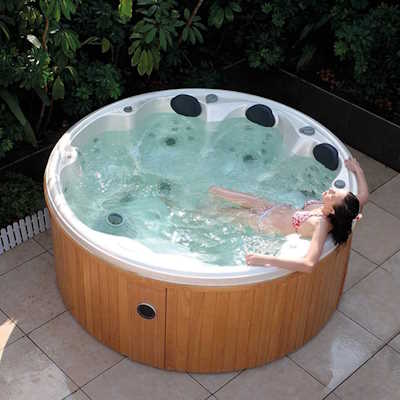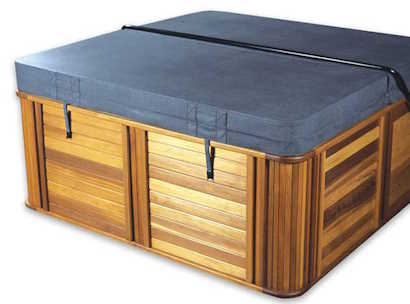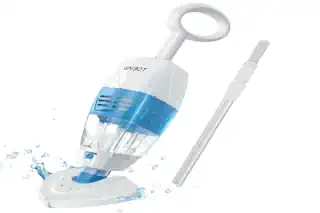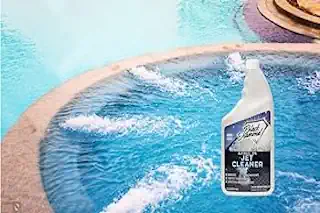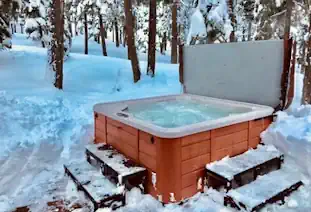How to Lower Alkalinity in Hot Tub: Achieving the Perfect Balance
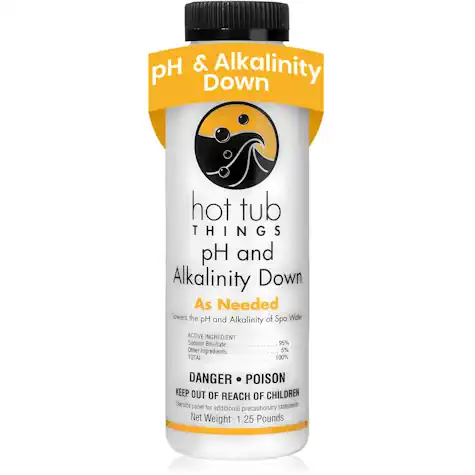
Hello, water warriors! If you’re knee-deep (or should I say spa-deep) in the world of hot tub maintenance, you know that achieving that crystal-clear water isn’t just about luck; it’s about balance. Today we’re zoning in on a not-so-talked-about topic that can be a real buzzkill for your bubble time: high alkalinity. But don’t fret, we’re here to help you lower those levels and keep your spa sessions blissful and balanced.
Understanding Hot Tub Alkalinity
First things first, what’s this alkalinity business about? Alkalinity, in the spa world, is like the best backstage crew—it makes sure the pH level stars perform at their best. It acts as a buffer, stabilizing the water’s pH levels, so they don’t go haywire. Ideally, your hot tub’s alkalinity should chill between 80 and 120 parts per million (ppm). Going overboard with alkalinity can mess with water quality and give you a hard time with pH levels, so it’s crucial to keep it in check.
Signs of High Alkalinity
How do you know if your hot tub is throwing an alkalinity party without inviting you? Watch out for cloudy water, scales forming on surfaces, or if you’ve been feeling itchy after a dip, your hot tub might be hinting that the alkalinity is too high. It’s not just uncomfortable—left unattended, it can lead to more significant issues like damaging your hot tub’s plumbing components.
Testing and Measurement
“But how do I measure water alkalinity anyway?” you ask. Grab yourself a reliable test kit or test strips made for hot tubs, and they’ll give you the lowdown on your water chemistry. Make sure you follow the instructions to the letter—accuracy is key. A hot tip? Test regularly. It’s much easier to correct small imbalances than fixing the big ones.
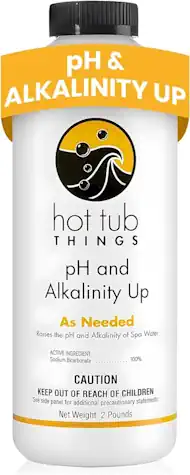
Methods to Lower Aldehydeating
Now for the heart of the matter: getting that alkalinity down. There are two ways of doing this. First is to use chemicals and second is a non-chemical choice. The two chemical options are sodium bisulfate or muriatic acid. Lets take a look at each.
Using Sodium Bisulfate
Alright, let’s get into the details of using sodium bisulfate, commonly known as dry acid, to lower the alkalinity in your hot tub. This method is a favorite among hot tub enthusiasts for its effectiveness and ease of use.
Sodium bisulfate is a granular acid that’s easy to handle, unlike its liquid counterpart, muriatic acid. When you introduce it to your hot tub water, it works efficiently to decrease the alkalinity, helping restore balance and clarity to your aquatic haven. Here’s a step-by-step guide to using sodium bisulfate:
Turn Off the Hot Tub: Safety first! Make sure your hot tub is turned off before you start.
Safety Gear On: Equip yourself with goggles and gloves. Handling any kind of acid can be hazardous.
Measure the Correct Amount: Follow the instructions on the packaging and based on your alkalinity readings, measure the appropriate amount of sodium bisulfate.
Add the Acid Slowly: Pour the granules into the deepest part of your hot tub water, avoiding any splashing.
Mix and Wait: Allow the granules to dissolve on their own for a bit before turning on the jets. Once you do, let the water circulate well.
Re-Test Alkalinity: After the recommended time, usually about 24 hours, re-test your water to ensure the alkalinity has reached the desired levels.
Household Substitutes
If you find yourself in a bind without sodium bisulfate on hand, don’t worry—some household items can serve as substitutes in a pinch. One widely available option is white vinegar. While not as concentrated as sodium bisulfate, vinegar is acidic and can help lower alkalinity. Simply add it slowly, with the same safety measures you would use for dry acid, and monitor your water levels carefully.
Another option could be lemon juice, as it also contains citric acid, though it may take more of it to achieve the same effect. Remember, these substitutes are best for temporary fixes, and it’s always a good idea to restock on the proper chemicals for long-term maintenance.
Incorporating sodium bisulfate or its household substitutes into your hot tub care routine can make a world of difference in maintaining that perfect water balance. Happy hot tub water care and tubbing, water warriors!
Using Muriatic Acid
Next up is using muriatic acid, a liquid and highly potent option for lowering alkalinity. Although it’s more powerful and needs to be handled with extra caution, muriatic acid can be a very effective way to keep your hot tub water balanced. Here’s how to use it safely and efficiently:
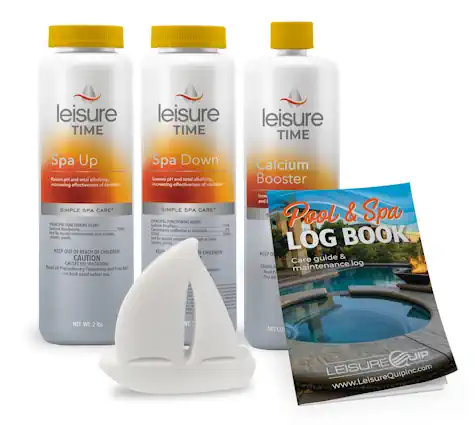
Turn Off the Hot Tub: Make sure your hot tub is completely turned off before you start handling the acid.
Put On Safety Gear: Muriatic acid is strong stuff. Be sure to wear protective goggles, gloves, and even an apron to shield yourself from splashes.
Measure the Correct Amount: Carefully read the instructions on the acid’s packaging. Based on your alkalinity readings, measure out the precise amount needed.
Dilute the Acid: Before adding it directly to your hot tub, dilute the muriatic acid with water in a plastic bucket. Always add acid to water, not the other way around, to prevent dangerous reactions.
Add the Diluted Acid to the Hot Tub: Slowly pour the diluted solution into the deepest part of your hot tub, avoiding any splashes.
Mix and Wait: Allow the mixture to integrate naturally before turning on the jets. Once the jets are on, let the water circulate thoroughly.
Re-Test Alkalinity: After about 24 hours, conduct another alkalinity test to ensure the levels have adjusted to the ideal range.
Household Substitutes
If you need to lower the alkalinity urgently and don’t have muriatic acid on hand, there are a few household items that might come to your rescue. While not as potent, they can temporarily address the issue until you can get the proper chemicals.
Baking Soda and Vinegar Combo: While baking soda helps to raise alkalinity, a vinegar solution can still help you control it. Mix equal parts of vinegar and baking soda in water. This mixture will produce a chemical reaction that can temporarily address high alkalinity.
Lemon Juice: Lemon juice, containing citric acid, can work—not as strongly as muriatic acid but good enough for smaller adjustments. Add it slowly while adhering to the same safety protocols.
Borax Solution: Borax can also be used. Prepare a diluted solution and add it cautiously to your hot tub water. Monitor your water levels regularly to ensure they hit the desired balance.
By incorporating these household substitutes when needed, you can maintain a well-balanced hot tub until you’re able to secure the right products for long-term care. Keeping these tips and methods in mind, you’ll be ready to tackle high alkalinity and maintain a luxurious soak for many relaxing sessions to come.
Non-Chemical Methods to Adjust Alkalinity
While chemicals like sodium bisulfate and muriatic acid are effective tools for managing the alkalinity in your hot tub, there are also non-chemical methods to consider. These approaches can be particularly useful for those who prefer a more natural alternative, feel there are too many chemicals in the spa, or have sensitivities to certain chemicals.
Partial Hot Tub Water Changes
One of the simplest and most effective non-chemical methods is to perform partial water changes. By removing a portion of the water from your hot tub and replacing it with fresh water, you can naturally bring the alkalinity levels closer to your desired range. This method is often the go-to approach for many hot tub owners because it’s straightforward and doesn’t introduce any new substances into the water.
Aeration
Aeration involves increasing the exposure of your hot tub water to air. This can be achieved by turning on the jets and allowing them to run for an extended period, which can help lower the alkalinity. The increased oxygenation causes carbon dioxide to escape, reducing the water’s alkalinity naturally. This method is gentle and chemical-free, making it a favorite for eco-conscious hot tub enthusiasts.
Dilution
Another natural way to adjust alkalinity levels is through dilution. Simply add more water to your hot tub to balance out the alkalinity. This method works best when the alkalinity is only slightly higher than desired. Just be sure to keep an eye on other water parameters, as dilution can also affect the overall balance of your hot tub’s water chemistry.
Using these non-chemical methods can be an effective and natural way to maintain the right balance in your hot tub. Whether you choose partial water changes, aeration, or dilution, these techniques provide alternative solutions for those times when you prefer to steer clear of chemicals. Here’s to enjoying a perfectly balanced, clean, and inviting hot tub experience!
Commercially Available Alkalinity Products for Hot Tubs
When it comes to maintaining a perfect balance in your hot tub, commercially available alkalinity products can be a lifesaver. These products are specifically formulated to address the unique needs of hot tub water chemistry and often come with clear usage instructions, making the maintenance process simpler and more efficient.
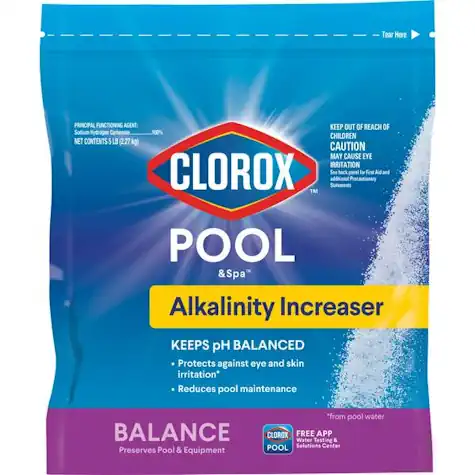
Increase Alkalinity
Alkalinity increasers are products designed to boost the alkaline levels in your hot tub. They are typically made from sodium bicarbonate and come in easy-to-use powder form. Brands like Leisure Time Spa Up and Clorox Spa Alkalinity Increaser provide detailed guidelines on how much to add based on your current readings, ensuring you achieve the desired levels without much hassle.
Measure Current Alkalinity: Use a reliable testing kit to get an accurate measurement of your hot tub’s current alkalinity.
Add the Alkalinity Increaser: Follow the manufacturer’s dosage instructions to determine how much product you need to add based on your test results.
Mix Thoroughly: Turn on your hot tub jets to help evenly distribute the product throughout the water.
Re-Test: After allowing the water to circulate for several hours, conduct another test to ensure the alkalinity levels are within the ideal range.
Alkalinity Reducers
For those times when your hot tub’s alkalinity is too high, commercially available alkalinity reducers can offer a precise and effective solution. These products often contain a mild acid that helps to lower alkalinity without causing significant pH fluctuations. Common brands such as SpaGuard Reduce and Natural Chemistry Spa Alkalinity Decreaser provide step-by-step instructions to ensure safe and effective use.
Test Alkalinity Levels: Start by using a test strip or digital testing kit to determine the current alkalinity.
Measure the Right Amount: Refer to the instructions on the product label to measure the appropriate amount needed for your hot tub.
Add the Product Slowly: Turn off the hot tub and carefully add the reducing agent, ensuring you avoid any direct contact with the skin.
Circulate the Water: Let the jets run for a few hours to mix the chemicals thoroughly.
Re-Test Alkalinity: After a day, re-test the water to confirm that the alkalinity levels have reached the optimal range.
Using these commercially available products can make the process of adjusting and lowering hot tub alkalinity levels straightforward and less time-consuming. Their targeted formulas and easy-to-follow instructions provide peace of mind, knowing that you can effectively manage your hot tub water chemistry with minimal effort. Happy hot tubbing!
Preventing High Aldehydeating
The secret to avoiding high alkalinity is regular maintenance. Test often, stick to a weekly (or bi-weekly) cleaning schedule, and after any heavy use or big hot tub parties, give your hot tub a clean-up some extra TLC with an additional water test and adjustment as needed.
Conclusion
There you have it, folks—your guide to lowering the alkalinity level in your hot tub and keeping it at that sweet spot. Regular testing and the right balance of chemicals—or fresh water—can make a world of difference in your soaking experiences. Remember, a little effort goes a long way in ensuring your hot tub is a haven, not a hassle. Keep those waters serene, and your soak time will always be a dream.
Frequently Asked Questions (FAQ)
How often should I check the alkalinity levels in my hot tub?
It’s recommended to check the alkalinity levels in your hot tub at least once a week. If you use the hot tub frequently or have had a significant number of people in it, you might want to test it more often to ensure optimal water balance. Always check after going through a hot tub clean cycle.
Can I use household baking soda as an alkalinity increase?
Yes, household baking soda (sodium bicarbonate) can be used as an alkalinity increaser in hot tub chemicals. However, it’s usually more convenient and reliable to use a product specifically designed for hot tubs, as these products come with detailed instructions and are formulated to work effectively in your hot tub’s environment.
What happens if I don’t regularly manage the alkalinity in my hot tub?
If you don’t manage the alkalinity levels in your hot tub, it can lead to various issues such as skin irritation, cloudy water, and damage to the hot tub’s components. High or low alkalinity in a hot well can also affect the efficiency of sanitizers, making it harder to maintain clean and safe water.
Is it safe to use my hot tub right after adding alkalinity increasers or reducers?
After adding alkalinity increaser or alkalinity decrease, it’s best to wait at least a few hours, or even overnight, allowing the water to circulate and the chemicals to fully disperse. Always re-test the total alkalinity of your water before using the hot tub to ensure that the levels are safe and balanced.
Are there natural alternatives for adjusting alkalinity besides partial water changes and aeration?
Partial water changes and aeration are two effective natural methods for adjusting alkalinity. Dilution with fresh water is another approach, though it’s important to watch other water parameters when doing this. These methods are often preferred for their gentle, chemical-free nature.
What is the ideal alkalinity range for a hot tub?
The ideal alkalinity range for a hot tub is typically between 80 to 120 parts per million (ppm). Keeping your alkalinity within this range helps to maintain balanced water chemistry, ensuring a pleasant and safe soaking experience.
These FAQs should help address some common concerns and questions about maintaining the right alkalinity levels in your hot tub. Keeping your hot tub’s chemistry balanced can sometimes feel daunting, but with regular checks and a bit of know-how, you’ll find it easier to manage and enjoy your hot tub to the fullest. Happy soaking!
